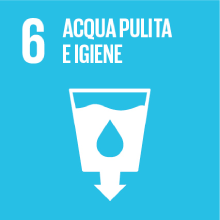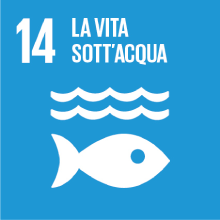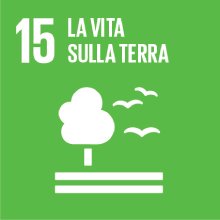ENVIRONMENTAL ARCHAEOLOGY OF COASTAL AREAS AND WETLANDS
- Anno accademico
- 2020/2021 Programmi anni precedenti
- Titolo corso in inglese
- ENVIRONMENTAL ARCHAEOLOGY OF COASTAL AREAS AND WETLANDS
- Codice insegnamento
- LMH230 (AF:339457 AR:180484)
- Lingua di insegnamento
- Inglese
- Modalità
- In presenza
- Crediti formativi universitari
- 6
- Livello laurea
- Laurea magistrale (DM270)
- Settore scientifico disciplinare
- L-ANT/09
- Periodo
- 3° Periodo
- Anno corso
- 1
- Spazio Moodle
- Link allo spazio del corso
Inquadramento dell'insegnamento nel percorso del corso di studio
The course will explore how archaeology and environmental approaches document the past human actions on the land and on the coastal areas through the techniques of landscape archaeology. Applying a broad chronological spectrum with a focus on historic times, the class will provide students with considerable information relating to our understanding of the human relationship with the coastal landscape and their narrative using the material record. The course will focus on how complex social/economic relationships and cultural values were entangled with the environment and how sustainability worked in the past.
The class will consider several coastal environments and their archaeological contexts, with a focus on the Venetian area: where the interrelationship between the environment, its human modifications, its maintenance, and its narrative has shaped across the centuries a unique cultural waterscape.
Risultati di apprendimento attesi
• human-environment relations studied through the archaeology of water and coastal/wetland sites;
• how past and present social relationships and cultural values shape traditional perceptions and current understanding of wetland, coastal and maritime landscapes ;
• the conservation management’s issues of coastal/wetlands landscapes;
• the integration of maritime and landscape archaeology in a theorized approach to the past.
The student will learn:
• how to re-read coastal and wetland archaeological areas using a multidisciplinary perspective;
• how to conceptualize the inter-relationships between environments and settlement through “water”;
• How to take benefit from the study of the past materiality around waters to better facing climatic changes;
• How to de-colonize some western perspective on the management of the Cultural Heritage coastal areas.
In a world facing environmental challenges through climate change that is expected to have substantial impacts on coasts, analyzing the past is vital to understand our future alternatives.
The course, during the first classes, will explore a global view of the Coastal and Wetland Archaeology, highlighting the current research challenges and the theoretical frameworks.
The second part will be devoted to exploring a few representative test cases, with a particular focus on the Venice area. In essence, the aim is to investigate how archaeological records and their narratives would be pivotal in the management and cultural assessment processes around coastal and wetland areas.
Prerequisiti
Contenuti
Why Wetlands Archaeology/Eco-determinism and eco-possibilism/Wetscapes and Climate Changes
2. Wetland and coastal occupation, a geographical and chronological perspective
Europe: Coasts and wetlands in prehistory and during the early middle ages/Wetland archaeology and marshes in the Ancient Middle East and pre-Colombian America
3. Waterlogged archaeological pieces of evidence and materials through time
Settlements, roads and networks/Houses and private spaces/Material culture: from fishing tools to ships/Bog bodies
4. Multidisciplinary approaches to the archaeology of coasts and wetlands
Paleo-ecological reconstructions/Archaeobotanical and archaeozoological studies/Geoarchaeology and paleo-hydraulic reconstructions/Living at the edge: rhythm and seasonability
5. The anthropology of wetland and coastal archaeology.
The archaeology of the adaption to climate changes/Long-distance routes, local infrastructures need.
6. Wetland archaeology and the public
Archaeological parks, open-air museums, and multimedia solutions/Narrating the past, narrating the water.
7. Climate change and archaeology: Building resilience from the research of the past
Approaches to climate change and cultural heritage/How climate change will affect the coastal communities and their heritage: the Sundabarns, Florida and the North Sea
8. Archaeology and coastal conservation
Preservation against erosion/Post excavation treatments/Politics and ethics: native communities and modern urbanization
9. Colonial and post-colonial Indian Ocean seascapes: archaeology, migrations, and labour. From the East Indian Companies to the tourist commodification of the coats
Commodify the seascape: oceans as global trade arenas/Migrations and labour: water and islands in the making of a new cosmopolitan connected world/From opium and sugar to the paradisiac beach narratives
10. Like pioneers. Wetlands and reclamations in the Mediterranean Area: a compelling archaeological history
Agriculture & re-defying the coast landscapes/Reclamations and health issues/Is reclamations positive? The Comacchio (Ferrara) test case and its archaeology/Reclaiming Venice? Venetian lagoon 19th-early 20th cent.
11. “The sea of intimacy.” The Adriatic Sea and its coastal archaeology through times.
Adriatic: the “land” of Venice/Adriatic coastal archaeology: a connected seascape/The role of underwater archaeology/Shipwrecks as history “capsules”: the Venice fleet.
12. Before Venice: Veneto coastal area from Iron Age to Late Antiquity. Sea-routes, river routes and the colonization of the wetlands
Politics or the Environment? Archaeological historiography/Cities or islands? Environmental and topographical analysis of the north-Adriatic settlements/Harbors and trade, mobility and connectivity through water routes.
13. Venice and its lagoon: “water” and “wood” as a proxy to explain the archaeological history of the Serenissima
Was the “watery” settlement choice a defence/military outcome or an environmental obligation?/Water or land: defining public and private spaces/Harbors, trade, trade routes, and water: lagoon and seascape as connecting infrastructures/Building techniques and the topography of the early Venetian settlements
14. Storing freshwater among salt marshlands: the archaeology of sustainability. Venice test case
Past practices of water sustainability? Archaeology & freshwater sustainability/How were past communities shaped by the role of water technologies?
15. Sinking Venice, Thinking Venice. High tides, sea levels and the conservation issues of historical and archaeological coastal sites
Wetscapes, Conservation practices, EU, Unesco.
Testi di riferimento
- Menotti F., O'Sullivan A., "The Oxford Handbook of Wetland Archaeology", Oxford 2013.
Other resources will be presented for each session.
All the materials, papers for personal study and the discussion tools will be uploaded in Moodle.
Modalità di verifica dell'apprendimento
- Class Participation (questions/brainstorming activities/online quizzes): (20%)
- Personal class presentation of 1 selected paper: (20%)
- Oral test (Final exam): (60%)
Modalità di esame
Metodi didattici
- Lectures;
- Participant's presentations;
- 1 Seminar (lesson 11), with external guests;
- Online quizzes;
- Viedo materials.
All the didactic materials will be available in moodle.
Altre informazioni
Students who can not attend at least 75% of class presentations and lectures have to contact calaon@unive.it for a personalized program.
Obiettivi Agenda 2030 per lo sviluppo sostenibile
Questo insegnamento tratta argomenti connessi alla macroarea "Capitale naturale e qualità dell'ambiente" e concorre alla realizzazione dei relativi obiettivi ONU dell'Agenda 2030 per lo Sviluppo Sostenibile



